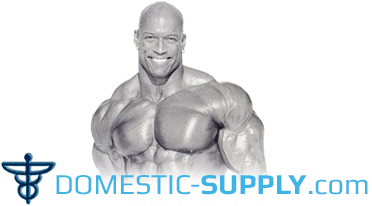9 Long-Term Impacts of Anabolic Steroid Use

Anabolic steroids, while often associated with athletic performance enhancement, carry substantial risks that can lead to long-term health complications. This discussion delves into nine significant impacts resulting from prolonged use of these substances.
Topics will include:
- Cardiovascular health risks
- Hormonal imbalances
- Psychological effects
- Skeletal system complications
- Skin and hair changes
- Liver health implications
- Impacts on lifestyle and relationships
Each section will provide a comprehensive overview of the potential consequences, painting a clear picture of why these substances should be approached with caution.
Anabolic steroids' effects extend beyond the immediate and understanding these long-term impacts is crucial for informed decision making.
Key Takeaways
- Anabolic steroid use can lead to cardiovascular health risks such as hypertension, atherosclerosis, myocardial infarction, heart failure, and sudden cardiac death.
- Hormonal imbalances caused by anabolic steroid use can disrupt testosterone production, reduce gonadotropin-releasing hormone (GnRH) levels, decrease sperm production in males, and cause irregular menstrual cycles or amenorrhea in females. It can also lead to an increase in testosterone levels in females.
- Anabolic steroid use has various psychological effects, including mood disorders, altered hypothalamic-pituitary-adrenal (HPA) axis function, cognitive deficits, neurotoxic effects on frontal brain regions, and an increased risk of substance use disorders.
- Anabolic steroid use can lead to skeletal system complications such as premature closure of growth plates in adolescents, decreased bone density, increased risk of osteoporosis, increased risk of fractures, delayed fracture healing, and joint pain and stiffness.
Understanding Anabolic Steroids
To comprehend the long-term impacts of anabolic steroid use, it is crucial to first gain an understanding of what these substances are, and the roles they play within the human body. Anabolic steroids, scientifically known as anabolic-androgenic steroids (AAS), are synthetic variants of the male sex hormone testosterone. These substances are named for their dual effects: 'anabolic' refers to the promotion of muscle growth, while 'androgenic' pertains to the enhancement of male sexual characteristics.
The body naturally produces testosterone to regulate multiple bodily functions, including muscle and bone mass, fat distribution, red blood cell production, and reproductive function. The introduction of synthetic AAS can disrupt this delicate hormonal balance, causing a cascade of physiological effects.
AAS are commonly used in medical settings to treat conditions such as muscle wasting in AIDS patients or delayed puberty in boys. However, their misuse, particularly in sports and bodybuilding, has been a subject of considerable concern due to the potential health risks.
Typically, AAS are consumed in cycles of weeks or months, a practice referred to as 'cycling'. Often, users combine different types of steroids, a process known as 'stacking', to maximize their muscular gains. These practices not only lead to short-term side effects but can also result in severe long-term health consequences.

Cardiovascular Health Risks
One of the most severe long-term impacts of anabolic steroid misuse is its detrimental effect on an individual's cardiovascular health. Steroids have been linked to various cardiovascular diseases, including hypertension, atherosclerosis, myocardial infarction, heart failure, and sudden cardiac death. The mechanisms underlying these adverse events are multifaceted and interrelated, primarily involving alterations in lipid metabolism, myocardial function, and coagulatory factors.
Steroids disrupt lipid homeostasis, causing an increase in low-density lipoproteins (the 'bad' cholesterol) and a decrease in high-density lipoproteins (the 'good' cholesterol). This skewed lipid profile promotes atherosclerotic plaque formation and the subsequent narrowing of arteries, leading to increased risk of heart attacks and stroke.
Moreover, the hypertrophic effect of steroids, while beneficial in muscle building, also extends to the myocardium, leading to cardiac muscle enlargement. This pathological hypertrophy impairs the heart's pumping efficiency and may culminate in heart failure. Steroids also induce cellular changes that make the myocardium more susceptible to arrhythmias, enhancing the risk of sudden cardiac death.
Lastly, steroids are known to increase the production of red blood cells and coagulation factors, thereby thickening the blood. This hypercoagulable state, combined with atherosclerosis, dramatically enhances the risk of thromboembolic events.
Hormonal Imbalances and Infertility
How do anabolic steroids contribute to hormonal imbalances and infertility issues?
Anabolic steroids, synthetic derivatives of testosterone, exert their effects by disrupting the normal production and regulation of hormones in the body. This disruption can lead to significant hormonal imbalances, which in turn can have severe repercussions on reproductive health.
Testosterone, a hormone primarily associated with male sexual characteristics, is also critical in maintaining sperm production. When anabolic steroids are introduced into the body, they trigger an overproduction of testosterone. In response, the body's feedback mechanisms reduce or even halt the production of gonadotropin-releasing hormone (GnRH), a precursor necessary for testosterone production. This decrease in GnRH subsequently leads to a reduction in the production of sperm, potentially causing infertility.
In females, anabolic steroids can cause a decrease in the levels of gonadotropins, hormones that stimulate the ovaries to produce eggs. This reduction can lead to irregular menstrual cycles, or even amenorrhea, the absence of menstruation. Additionally, anabolic steroids can also lead to an increase in testosterone levels in females, potentially causing male physical characteristics, such as hirsutism (excessive hair growth) and deepening of the voice.
The long-term use of anabolic steroids can lead to permanent changes in hormonal production, causing irreversible damage to the reproductive system. Therefore, despite their prevalent use for performance enhancement, the potential for severe hormonal imbalances and infertility issues should be considered as a significant deterrent to their use. A comprehensive understanding of these risks is crucial to inform decisions about anabolic steroid use.

Psychological and Emotional Effects
Beyond the physical repercussions, the long-term use of anabolic steroids can also precipitate profound psychological and emotional disturbances. This is substantiated by a significant body of empirical evidence that has highlighted the potential for anabolic steroids to induce a range of adverse neuropsychiatric effects, which may persist long after cessation of use.
A notable psychological alteration is the manifestation of mood disorders, including major depressive disorder, mania, and hypomania. It has been elucidated through neuroscientific studies that the pathophysiology of these mood disorders can be attributed to the alterations in the hypothalamic-pituitary-adrenal (HPA) axis, a crucial neuroendocrine system that regulates mood and emotions, induced by chronic steroid use.
Furthermore, anabolic steroids may also engender cognitive deficits. Long-term users have demonstrated impaired performance in various cognitive domains, such as working memory and executive functions. This impairment is believed to be associated with the neurotoxic effects of steroids on frontal brain regions, which are integral for these cognitive functions.
Lastly, steroid use exacerbates the risk of developing substance use disorders. The dysregulation of the brain's reward system, induced by chronic steroid exposure, can lead to increased susceptibility to addiction. This is further compounded by the withdrawal symptoms, which include anxiety and depression, that users experience upon cessation.
Skeletal System Complications
In addition to the psychological ramifications, anabolic steroid use also brings about serious complications in the skeletal system. These complications are primarily the result of hormonal imbalances caused by the synthetic hormones disrupting the body's natural hormonal regulation.
One of the most significant skeletal complications of anabolic steroid use is premature epiphyseal closure. This condition occurs when the growth plates in bones close prematurely, stunting growth. It is particularly concerning in adolescent users, whose bones are still developing. Steroids stimulate an accelerated maturation of the bones, which can lead to shorter stature in adulthood.
Osteoporosis, a condition characterized by the weakening of bones, making them more prone to fractures, is another potential consequence. Steroids disrupt the balance between bone building (osteoblastic activity) and bone breakdown (osteoclastic activity), favoring the latter. This imbalance can over time lead to a decrease in bone mineral density, increasing the risk of fractures.
Steroid-induced avascular necrosis is a rare, but severe complication. This occurs when the blood supply to the bone is cut off, resulting in the death of bone tissue. Steroids are thought to increase fat deposits in blood vessels, which can impede blood flow.
In conclusion, the skeletal complications of anabolic steroid use are serious and potentially life-altering. These risks, combined with the psychological effects previously discussed, highlight the dangers of non-medical use of these substances.

Therefore, it is essential to raise awareness about the potential long-term impacts of anabolic steroids on the skeletal system and overall health.
Skin and Hair Changes
While the skeletal system suffers greatly from anabolic steroid use, the skin and hair are also subject to detrimental changes, which manifest in various ways. The dermatological consequences of anabolic steroid use are primarily linked to the androgenic effects of these substances. This refers to the promotion of male characteristics, which are facilitated by the increased production of sebum, an oily substance produced by the skin's sebaceous glands.
Sebum production typically increases during adolescence, often resulting in acne. Anabolic steroids mimic this effect, regardless of the user's age, leading to the development of acne, particularly on the back and shoulders. This condition, known as steroid acne, can be severe and is distinct from normal acne in its resistance to standard acne treatments.
Anabolic steroids also impact hair growth, both on the scalp and the body. Male pattern baldness, a genetic condition, can be accelerated by steroid use due to the increase in dihydrotestosterone (DHT), a hormone implicated in follicular miniaturization and hair loss. Concurrently, body hair may increase, a condition known as hirsutism, particularly in women.
In addition, steroid use can lead to changes in skin color and texture. The skin may become rougher and more leathery in appearance, and in some cases, users can develop a yellowish tint to the skin, a condition known as jaundice, which is indicative of liver damage.
Implications on Liver Health
Experiencing significant liver damage is a grave concern associated with long-term anabolic steroid use. The liver, a vital organ responsible for detoxifying the body and metabolizing substances, can become severely compromised due to prolonged exposure to these steroidal compounds.
Scientifically, anabolic steroids are classified as hepatotoxic, meaning they can induce liver damage by promoting the development of hepatic adenomas, peliosis hepatis, and even hepatocellular carcinoma. Hepatic adenomas are benign liver tumors that can rupture and bleed, causing significant health risks. Peliosis hepatis, on the other hand, involves the formation of blood-filled cysts in the liver. Both conditions can lead to serious complications if not managed appropriately.
The most alarming potential consequence of long-term anabolic steroid use is hepatocellular carcinoma, a form of liver cancer. Research indicates that steroid users are at an increased risk of developing this aggressive type of cancer, contributing to its high mortality rate.
Furthermore, anabolic steroids can cause cholestasis, a condition where bile cannot flow from the liver to the duodenum. This condition can lead to jaundice, itchiness, and lethargy, among other symptoms.

To conclude, the implications of anabolic steroid use on liver health are significant and multifaceted. The potential for serious liver conditions, including benign tumors, blood-filled cysts, liver cancer, and cholestasis, underscore the potential long-term health risks associated with the misuse of these substances. It is imperative that individuals understand these risks before making decisions that could irreversibly impact their health.
Impact on Lifestyle and Relationships
Frequently, the long-term use of anabolic steroids can profoundly affect an individual's lifestyle and relationships, leading to detrimental social and psychological consequences.
In the realm of lifestyle, changes may encompass a shift in priorities, with an excessive focus on body image and performance, often at the expense of other areas of life. This hyper-focus can lead to a decline in work or academic performance, neglect of family responsibilities, and reduced engagement in social activities.
From a relationship perspective, steroid use can lead to increased aggression, known colloquially as 'roid rage.' This heightened aggression can strain interpersonal relationships, causing conflicts with family members, partners, and peers. Furthermore, the secretive nature of steroid use, due to its legal and social stigma, can lead to deception and dishonesty, undermining trust in relationships.
The psychological impact of anabolic steroids also plays a significant role in lifestyle changes and relationship dynamics. Prolonged use can lead to psychological dependence, mood disorders, and even psychiatric disorders like depression and anxiety. These mental health issues can further complicate social interactions and relationships, leading to isolation and reduced quality of life.
Scientifically, these issues are caused by the alteration of the body's natural hormonal balance, which affects the brain's neurotransmitter systems. Particularly, the alterations in the levels of dopamine, serotonin, and norepinephrine are associated with mood changes and aggressive behavior.
Frequently Asked Questions
Are There Any Potential Benefits of Anabolic Steroid Use?"
While anabolic steroids are often associated with negative impacts, there are potential benefits to their use, particularly in medical contexts. Steroids can assist in muscle growth and recovery, making them useful in treating conditions such as muscle wasting diseases, delayed puberty, and some kinds of anemia.
However, it's crucial to note that these benefits are typically seen under medical supervision and the misuse of these substances can lead to serious health concerns.
How Prevalent Is Anabolic Steroid Use in Professional Sports?"
The prevalence of anabolic steroid use in professional sports is difficult to quantify due to secretive usage and evolving detection methods. However, it is widely acknowledged within the sports industry that such use is not uncommon.

Various studies suggest a range from under 1% to over 50%, depending on the sport and level of competition. This pervasive issue underscores the need for rigorous anti-doping policies and comprehensive athlete education.
What Are the Legal Repercussions of Using Anabolic Steroids?"
The legal repercussions of using anabolic steroids vary globally. In many jurisdictions, they are classified as controlled substances. Unlawful possession, distribution, or use often leads to criminal charges, potentially resulting in fines, probation, or imprisonment.
Additionally, athletes caught using such substances face penalties from their governing bodies, including disqualification, suspension, or lifetime bans. The severity of these penalties underscores the seriousness with which steroid misuse is regarded.
Are There Any Effective Treatments or Therapies for Anabolic Steroid Addiction?"
Yes, there are effective treatments for anabolic steroid addiction.
Cognitive-behavioral therapy (CBT) has shown promise in addressing the psychological dependency.
Medical treatments may include medications to restore hormonal balance and mitigate withdrawal symptoms.
A holistic approach involving exercise and nutrition guidance is also beneficial.
However, treatment success depends largely on individual commitment and the severity of the addiction.
It's crucial for individuals seeking help to consult with healthcare professionals for personalized treatment plans.

Can the Adverse Effects of Anabolic Steroids Be Reversed After Discontinuing Their Use?"
The potential for reversal of the adverse effects of anabolic steroids relies largely on the duration and intensity of use. Some effects, like hormonal imbalance and mood changes, may reverse over time after discontinuation.
However, severe long-term effects like heart disease, liver damage, or psychiatric disorders may not fully reverse.
Early detection and cessation, combined with medical treatment, are key to mitigating the health risks associated with anabolic steroid use.
Conclusion
In conclusion, the long-term impacts of anabolic steroid use are profound and multifaceted, affecting not only physiological health but also emotional well-being and interpersonal relationships. These include:
- Cardiovascular complications
- Hormonal imbalances
- Infertility
- Psychological disturbances
- Skeletal complications
- Changes in skin and hair
- Liver damage
- Significant lifestyle alterations
Further research is necessary to understand these complexities fully and develop targeted interventions for individuals affected by steroid misuse.
